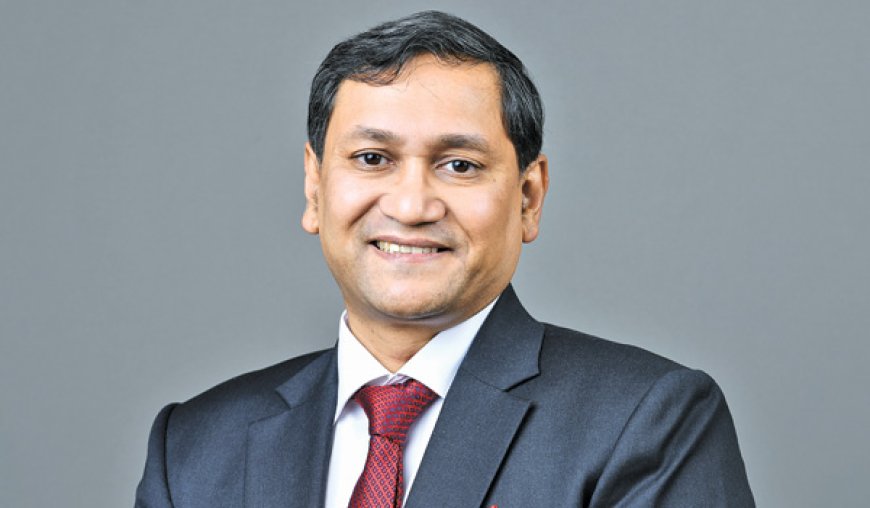Our commitment to innovation has led to the development of several groundbreaking machines.
Shantanu Roy,Chairman & Managing Director, BEML What is your focus for IME this time? Our primary focus revolves around enhancing our mining equipment capabilities. A significant shift towards sustainability drives our second initiative, transitioning from diesel-powered to electric-powered operations. The

What is your focus for IME this time?
Our primary focus revolves around enhancing our mining equipment capabilities. A significant shift towards sustainability drives our second initiative, transitioning from diesel-powered to electric-powered operations. The third priority entails addressing the non-coal sector. Diversification marks our fourth key area.
This year, our emphasis on the underground mining sector has gained considerable traction. It’s noteworthy that among Indian PSUs, we stand alone in manufacturing HEML for open-cast mine overburdens. Our aspiration is to become the premier or sole PSU dedicated to manufacturing underground mining equipment, a segment presently overlooked by Indian PSUs. We aim to escalate our focus on underground mining, targeting a growth from the current 25 million tons to 100 million tons over the next seven years, requiring approximately 19 high wall miners.
Furthermore, while open-cast mining equipment has its limitations in terms of depth, the future of mining lies in continuous miners for deeper mine exploitation. Developed nations have adopted underground mining extensively due to its benefits: no land acquisition, no displacement, and minimal environmental impact. This aligns with our commitment to sustainability and positions underground mining as the future of the industry, addressing various environmental concerns. Our strategic objectives are threefold: to fortify our existing product portfolio, to organically diversify, and to expand into new areas.
What are the products you are showcasing?
We’ve chosen not to focus on any equipment in the outdoor as we believe it’s not a necessity. Our expertise lies in a diverse range of cutting-edge mining equipment. Our showcase includes pioneering initiatives, prominently featuring high-end machinery like the 190-ton equipment, already in active operation within Coal India. Additionally, our 880-horsepower bulldozer has been successfully deployed.
Our commitment to innovation has led to the development of several groundbreaking machines. Among them is the 460-horsepower wheel dozer and the 550-horsepower conveyor. Currently, we’re also in the process of creating a 220-cubic meter shovel and an 8-ton tire handler. These high-end machines represent a category where Indian manufacturers are presently absent. Our primary focus is on crafting these specialized pieces expressly for Coal India’s needs.
How is mining market in India compared to other countries?
Let’s delve into the driving forces behind the thriving mining market. An overarching factor propelling this growth is the escalating need for power. Coal remains the primary and cost-effective fuel source meeting this demand. The surge in coal production reflects this necessity, with expectations for coal India and similar entities to achieve a remarkable 1 billion tons production this year. Coal India, likely holding a 78% share, aims to collectively reach 1.5 billion tons within the next 2-3 years. This growth isn’t confined to Coal India alone; it involves various stakeholders, including captive mine owners and private sectors, embracing a mix of underground and open-cast mining.
Moreover, an upcoming PLI scheme targets private mine developers and the sector at large, offering incentives to bolster mining activities, especially in underground exploitation. The sector’s trajectory aligns with burgeoning demands for steel, witnessing a 10% increase, and a 3% uptick in demand for other metals. This surge in demand necessitates heightened mining activities and extraction.
The 2021 government policy, coupled with existing extraction policies, notably benefits captive mine owners. Enabling them to vend 50% of their production in the open market, this policy serves the country’s interests, fortifies the mining and mineral sectors, and augurs well for equipment manufacturers like BEML.
You said lot of things about equipment and technology. How do you maintain equilibrium between price and quality?
It’s a complex task to achieve. Quality often comes with its own price tag—opting for a Mercedes means paying for that level of excellence, while a Maruti comes at its own price point. Expecting a Mercedes at Maruti’s price is a tough proposition. This challenge becomes more pronounced, especially when aiming for indigenous production. Initially, costs tend to be higher due to various factors—issues in the supply chain, the constraints of minimum economic order quantities, among others.
For instance, consider a multinational company producing 190-ton dumpers. Their advantage lies in a global supply chain and a vast market presence, enabling them to procure globally in large quantities. However, our focus is primarily on the Indian market. When we aim to localize production, we can’t immediately provide the same volume to our local supply chain. This necessitates significant investments in the supply chain during the initial phase. BEML shoulders this investment burden as the smaller MSMEs (Micro, Small & Medium Enterprises) involved in this process lack the capacity to invest in such technology. Thus, BEML plays a crucial role in guiding and supporting them through this journey.
Consequently, initial prices are higher. However, as the supply chain matures and technology stabilizes—roughly in 3-4 years—we anticipate finding an equilibrium. This will allow us to leverage economies of scale and stabilized technology to gradually bring down costs as quantities increase. That’s our strategy moving forward.
How do you look at the performance of BEML in last couple of quarters?
We’ve had a mix of performances over the last couple of quarters. The first quarter was disappointing in terms of sales revenue. However, from the second quarter onward, we’ve seen a notable uptick. I’m unable to disclose specifics about the second quarter results due to our current silent period. After the upcoming board meeting in five days, I’ll be able to provide more information. I can say though that there’s a significant improvement expected from the first quarter to the second.
Hits: 3








